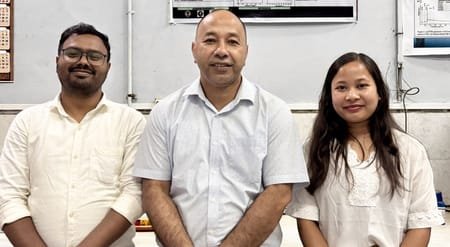Researchers from Nagaland University and collaborating institutions have announced a significant advancement in supercapacitor technology with the development of a novel, cost-effective method for producing high-performance ‘functionalised graphene’ electrode material. This innovation addresses a key barrier to the widespread adoption of supercapacitors, which are gaining prominence for their rapid charging capabilities and high energy storage potential, offering a sustainable alternative to traditional batteries.
An official highlighted the growing interest in supercapacitors as a crucial solution for meeting the increasing demand for efficient and sustainable energy storage systems. However, the high cost associated with electrode materials has historically hindered their widespread application.
This groundbreaking research directly supports India’s increasing focus on clean energy initiatives and environmentally responsible technologies. The research team has successfully developed a new and more efficient route to produce aminated graphene, a derivative of reduced graphene oxide. This innovative method significantly reduces production costs and accelerates the entire process compared to conventional techniques.
Furthermore, the resulting material exhibited excellent electrochemical properties, paving the way for the development of higher-performing and more affordable energy storage solutions.
Promising initial laboratory tests have validated the effectiveness of this new material. The research has already been granted an Indian patent, signalling its potential for commercialization.
The project was a collaborative effort involving researchers from Nagaland University, Visvesvaraya Technological University (Karnataka), and Nagarjuna College of Engineering and Technology (Karnataka). Their combined expertise led to the development of this cost-effective method for creating high-performance functionalised graphene supercapacitor material.
This advanced material boasts a wide electrochemical window, exceptional stability, and impressive energy density. The significant findings of this research have been published in a leading journal that serves as a platform for original research across various scientific disciplines.
Elaborating on the significance of the work, Prof. Dipak Sinha from the Department of Chemistry at Nagaland University explained, “Unlike traditional methods that are time-consuming and require substantial resources, our new approach operates under moderate temperature and pressure conditions. This makes it energy-efficient, significantly faster, and much more suitable for large-scale production.”
Prof. Sinha further emphasized the enhanced performance of the resulting material, stating, “This innovative material not only simplifies the manufacturing process but also delivers substantially improved performance. It enables a supercapacitor with a wide 2.2 V electrochemical window, an energy density exceeding 50 Wh/kg, and remarkable 98 per cent energy retention even after 10,000 charge-discharge cycles.”
“Notably,” Prof. Sinha added, “this aminated graphene achieves a fivefold increase in gravimetric energy density compared to its non-aminated counterpart, clearly demonstrating both its scientific novelty and significant commercial potential.” This research represents a major step forward in making high-performance energy storage more accessible and affordable.

